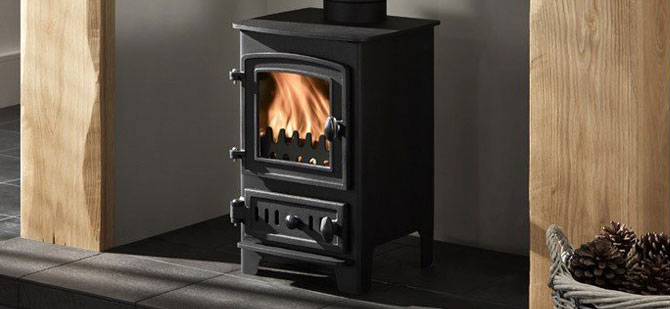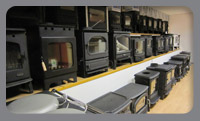Back to Help and Advice
What is Chimney Liner and what is it used for?Stainless Steel Class 1 chimney liner is a flexible twin-skinned liner, also known as 'Quattro'. Class 1 chimney liner has been designed for chimneys that have failed an inspection by a trained individual, or if the draw on the chimney is not performing efficiently.

Multi-fuel flue liner is used for relining traditional chimney stacks. The liner has a twin skin construction, with a corrugated outer skin and smooth inner. The inner and outer skins are held in place with the best triple-lock jointing system available. Multi-fuel flue liner is suitable for use with gas and oil fired installations, as well as for solid fuel.
Chimney Liner
316/316 Grade Flue Liner This liner uses 316 grade stainless steel for the inner and outer skins and is suitable for use on stoves burning the following fuels: gas, oil, coal, coke, seasoned dry logs, cured dry peat and some smokeless fuels. 316/316 grade flue liner has a 10 year guarantee (product replacement only). 904/316 Grade Flue Liner A more robust liner, which uses 904 grade stainless steel for the inner skin and 316 grade stainless steel for the outer skin. This liner is suitable for use on stoves burning gas, oil, coal, coke, seasoned dry logs, cured dry peat and smokeless fuels. This is the most economical liner for use with all smokeless fuels. 904/316 grade flue liner has a 20 year guarantee (product replacement only). 904/904 Grade Flue Liner Using 904 grade stainless steel for the inner and outer skins, this is the best chimney liner you can buy. Suitable for use on stoves burning gas, oil, coal, coke, seasoned dry logs, cured dry peat and all smokeless fuels and recommended for stoves with heavy usage, or if you are slumbering your stove overnight. 904/904 grade flue liner has a 20 year guarantee (product replacement only). Top Plate And Top Clamp The top plate and top clamp are used as a method of fixing the chimney liner to the top of the stack. It is necessary to remove the chimney pot, fit the chimney liner in place with the plate and clamp, and then refit the chimney pot once installed. The chimney liner passes through the hole in the plate and is gripped in place with the top clamp. For a secure fixing, it is recommended to use a top sleeve, which fits inside the top of the chimney liner and gives a solid inner for the top clamp to grip against. Liner Adaptor The liner adaptor is manufactured from 316 grade stainless steel. The adaptor is used to connect flexible chimney liner to the flue pipe at the base of the flue. The inner skin is slightly longer to prevent snagging and reduce strain on this joint when sweeping. Increaser Liner Adaptor The increaser adaptor is very similar to the standard liner adaptor. It is used to connect the flexible chimney liner to a 1" smaller diameter flue pipe at the base of the flue. The inner skin is slightly longer which prevents snagging and reduces strain on this joint when sweeping.
To connect the liner to the adaptor, you will require some stainless steel self tapping screws. Drill some pilot holes through the outer skin of the adaptor and secure the liner in place. Complete the joint by sealing between the liner and outer skin of the adaptor with fire cement.
On the inner of the adaptor there is a hole. This allows any moisture running down the inside of the liner to drain. The idea is that all moisture and deposits stay on the inside of the completed installation.
You will need access to the flue liner for sweeping purposes when using oil or solid fuel fired appliances. It is sometimes possible to sweep through the stove by removing the baffle plate at the top of the stove. If this is not possible, you will need to provide the access via a sweeping hatch in the stove pipe.

















